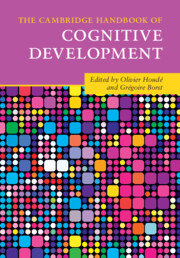Book contents
- The Cambridge Handbook of Cognitive Development
- The Cambridge Handbook of Cognitive Development
- Copyright page
- Contents
- Figures
- Tables
- Contributors
- Introduction
- Part I Neurobiological Constraints and Laws of Cognitive Development
- Part II Fundamentals of Cognitive Development from Infancy to Adolescence and Young Adulthood
- Part III Education and School-Learning Domains
- 25 Linking Cognitive Neuroscientific Research to Educational Practice in the Classroom
- 26 Literacy
- 27 Reasoning in Mathematical Development
- 28 Children’s Scientific Reasoning Skills in Light of General Cognitive Development
- 29 Working Memory Training
- 30 Interventions for Improving Executive Functions during Development
- 31 Curiosity-Driven Learning in Development
- 32 Neurocomputational Methods
- Index
- Plate Section (PDF Only)
- References
25 - Linking Cognitive Neuroscientific Research to Educational Practice in the Classroom
from Part III - Education and School-Learning Domains
Published online by Cambridge University Press: 24 February 2022
- The Cambridge Handbook of Cognitive Development
- The Cambridge Handbook of Cognitive Development
- Copyright page
- Contents
- Figures
- Tables
- Contributors
- Introduction
- Part I Neurobiological Constraints and Laws of Cognitive Development
- Part II Fundamentals of Cognitive Development from Infancy to Adolescence and Young Adulthood
- Part III Education and School-Learning Domains
- 25 Linking Cognitive Neuroscientific Research to Educational Practice in the Classroom
- 26 Literacy
- 27 Reasoning in Mathematical Development
- 28 Children’s Scientific Reasoning Skills in Light of General Cognitive Development
- 29 Working Memory Training
- 30 Interventions for Improving Executive Functions during Development
- 31 Curiosity-Driven Learning in Development
- 32 Neurocomputational Methods
- Index
- Plate Section (PDF Only)
- References
Summary
In the past three decades, cognitive neuroscience has made substantial progress toward the understanding of how brain areas are associated with essential classroom skills – such as reading and arithmetic. This growing knowledge has inspired the possibility that these findings can be used to improve educational policy and practices. Indeed, ample enthusiasm can be seen in the field from the surge of reviews and discussion papers highlighting cognitive neuroscientific findings that may be relevant to educational practice (e.g., Blakemore & Frith, 2005; Goswami, 2004), and with the establishment of the peer-reviewed journal, Mind, Brain, and Education, and an international society of the same name to promote research linking cognitive neuroscience with education.
- Type
- Chapter
- Information
- The Cambridge Handbook of Cognitive Development , pp. 537 - 553Publisher: Cambridge University PressPrint publication year: 2022



